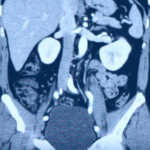There is an uncommon but dangerous fungus infection that is resistant to drugs called Candida Auris (C. Auris) People who have a suppressed immune system when exposed to this pathogen can develop life-threatening complications.
There are certain strains of C. Auris, called superbugs because they are resistant to drugs, and are causing infections in hospital environments all over the world. The infections from hospitals, which affect people who have compromised immune systems especially after surgery, are difficult to diagnose and treat, and they are causing a high mortality rate.
In a normal healthy person, a C. Auris infection will present no symptoms or signs. However, in a person who has a weakened immune system, the resultant infections and complications can cause organ failure or coma.
Treating C. Auris infections in people with low immunity is difficult, and the drugs used are of little help. Often, it has required the administration of high doses of antifungal drugs from several major classes in order to treat this infection. The severity of the infection will determine the success of the treatment.
Candida Auris – Identification and Symptoms
People who have a normal immune system will not suffer any signs or symptoms from a Candida Auris infection, but those with weak immune systems will. These symptoms include:
- Infection of the ears
- Symptoms resembling those of flu, which include fever and chills
- There will be general malaise
- Any open wound will get infected
- The patient will be confused and disoriented
- There will be infection of the blood leading to sepsis. There will also be fungi in the blood (Fungemia)
- If the patient is not responding to antifungal drugs, then this is another symptom that he or she has a C. Auris infection
You will find the signs and symptoms being specific to one body part.
Identification of Candida Auris require specialized laboratory techniques and methods. When viewed from a microscope, the cells have ellipsoid shape.
Candida Auris – Causes
The microorganism known as Candida Auris is the one that causes the Candida Auris infection. This is an opportunistic microorganism, which only affects those whose immune systems are compromised. People with healthy immune systems are able to fight it off, or do not exhibit any symptoms even if they are infected.
This yeast-like fungus can be found on equipment and surfaces in hospital settings. Sometimes it can spread through the outside environment.
There are those variants which are said to be multi-drug resistant (MDR) and these can cause very bad outbreaks in health centres.
There is no known way of transmission and this is still being investigated. Nobody knows whether it is spread through the air or through contact.
People who have had Candida Auris infections in the past will still have it within the mucous membranes and on the skin; they can spread it to people with suppressed immune systems when they come into contact with them.
Open wounds on the skin will get infected and can also spread the microorganism.
Treatment
The success of the treatment of Candida Auris will depend on the immunity of the patient, the infected site and their risk factors.
- Standard antifungal drugs are used to treat regular Candida Auris infections
- The treatment options become challenging and limited when dealing with the MDR variants of Candida Auris. The regular treatments will not be effective, even though there is hope of some drugs being developed to treat the MDR variants. In some cases, high doses of antifungal drugs belonging to several major classes have proven to be successful in treating the disease.
- Where systemic infection has occurred, then systemic therapy is administered.
Prevention of Candida Auris infection
Although it is important for the quick diagnosis and treatment of Candida Auris to be done, it is also important that you know how to prevent the infection in the first place. The primary step to be taken, when Candida Auris is found in a health facility is to contain the spread through the facility by taking preventative measures. Here are some of them:
- All healthcare professionals should wash their hands properly
- It is crucial to inform and educate caretakers, visitors and patients about how to maintain proper hygiene and cleanliness practices
- There should be frequent cleaning of all hospital areas, and surfaces with antifungal disinfectants. The high-risk areas are intensive care units, surgical theatres, patient rooms, consultation rooms, medical equipment and labs.
- The hospital environment and areas near standard biomedical and other medical waste disposal areas should also be disinfected.
- It is important to use advanced cleaning techniques within the hospital environment. Use hydrogen peroxide, UV light for cleaning. You should also employ proper ventilation, filtration and air cleaning measures.
- In the case of a Candida Auris infection being diagnosed, the local health authorities should be notified so they can warn other healthcare facilities.
There is a lot of research going on to find a way of monitoring and containing Candida Auris infections.

